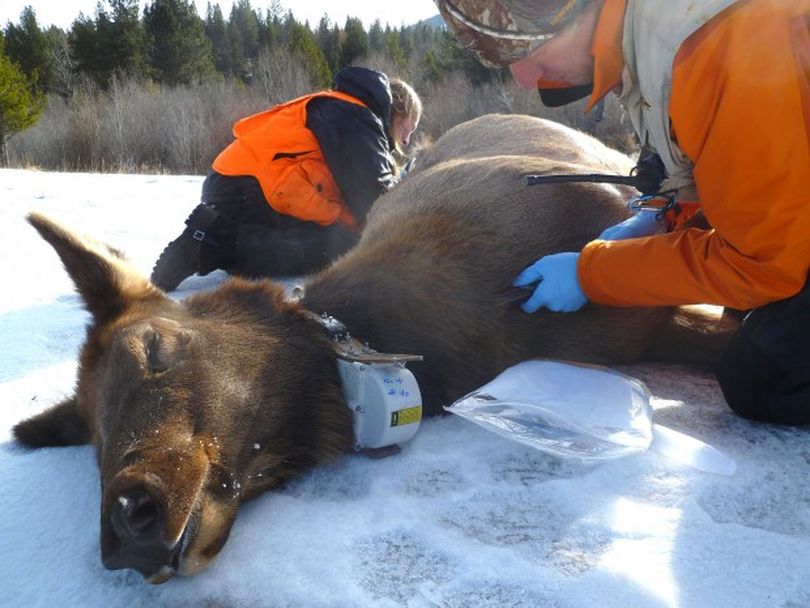Panhandle elk collared for research

WILDLIFE RESEARCH -- More elk are likely to be wearing research "necklaces" in the Coeur d'Alene River drainage by the end of the week if Idaho Fish and Game researches get good weather for flying.
The agency worked with a private helicopter contractor on Jan. 14-15 to tranquilized and fit transmitting collars on 22 cow elk in the Cataldo area (north and south of I-90) and in the North Fork of the Coeur d’Alene River.
The project design calls for a total of 45 elk to be collared in the study so that IDFG can monitor survival rates, habitat use and seasonal movements. If weather is suitable for flying, additional elk will be collared on Friday, Feb. 28, and Saturday, March 1.
Cow elk are being captured with either nets or tranquilizer darts depending upon the terrain and density of the forest canopy, said Phil Cooper, department spokesman. Once an elk is restrained or under anesthesia, a handler fits the animal with a GPS collar. Blood and fecal samples are taken for disease and pregnancy surveillance. An estimate of each animal’s age is made by a tooth examination and a measure of body condition is taken. The elk is then released at the capture site and the search for another elk begins.
Read on for more details from Cooper about the research and the status report of the initial 22 elk that were collared.
The GPS collars record the animal’s location once per day. The location, time, and other pertinent data are transmitted to a satellite, and the locations are sent by email weekly to IDFG biologists. Collars are functional for several years.
Prior to the development of GPS collars, IDFG had to use an antenna in hand or on a plane to fix a location. Most locations were usually midday, during nice (good flying) weather. Now, locations are taken regardless of weather, giving a much better picture of habitat use.
The collar emits a unique signal if the collar is inactive for 8 hours, an indication of a possible mortality. When such a signal is received, the collar can be located as soon as possible and biologists can often (but not always) determine the cause of death. Although the biologists will try to determine the cause of the death when possible, it is not the objective of the study; rather the objective is to determine the overall survival rate of cow elk in the study area.
After more than a month, all 22 cow elk collared in January are still alive and their collars are performing exactly as they were intended to work.
New technology, such as the use of GPS collars, has changed wildlife management over time. New equipment and techniques have enabled better data collection and a better understanding of what is actually happening outside in all kinds of weather, in daylight and dark, and throughout the entire year.
